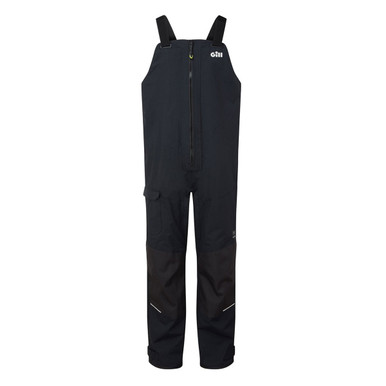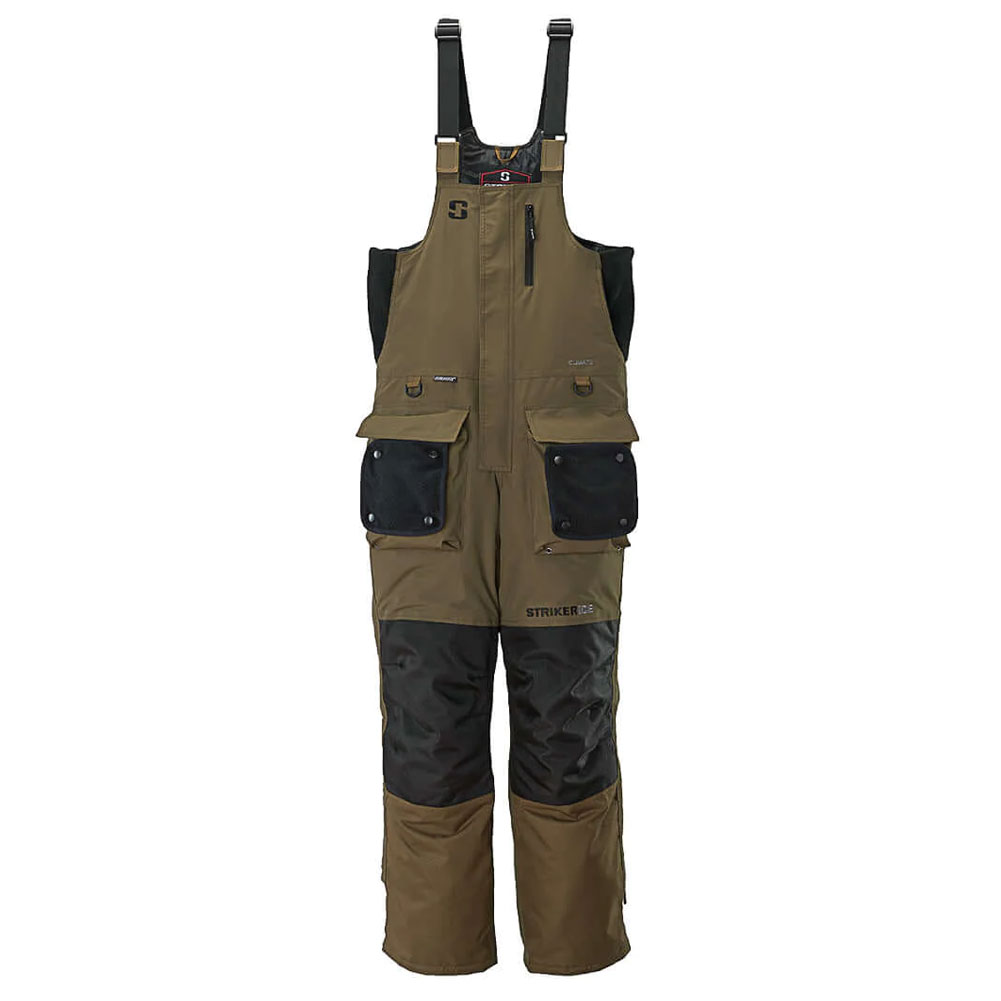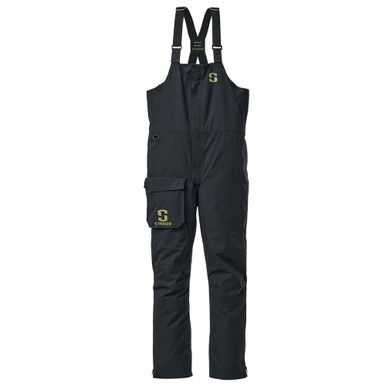- In stockDRAKE Men's Endurance Jean Cut Wader Pants (AD2300)Features of DRAKE Mens Endurance Jean Cut Wader Pants AD2300 100% polyester high-gauge microfiber interlock stretch fabricFleece-linedAgion Active X2 scent control technologyReinforced knees ...
 $49.99
$49.99 - In stockGILL Men's Verso Lite Black Trousers (V102TBLK01)Features of GILL Men Verso Lite Black Trousers V102TBLK01 100% PolyesterXPLORE 2-layer waterproof and breathable fabricFully taped seams for a waterproof sealHigh fit design with adjustable ...
 $145.00
$145.00 - In stockSTRIKER ICE Women' s Stella Black Fishing Bib (62123)Features of STRIKER ICE Womens Stella Bib 62123 320D nylon tussor shellHydrapore waterproof 5,000mm / breathable 5,000g150g Sureflote flotation assistance technology133g PrimaLoft Silver ...53% off
 $184.99$359.99
$184.99$359.99 - In stockSTRIKER ICE Men's Predator Black/Charcoal Fishing Bib (62114)Features of STRIKER ICE Mens Predator Bib 62114 320D nylon tussor shellHydrapore waterproof 5,000mm / breathable 5,000g150g Sureflote flotation assistance technology100g Thermadex ...54% off
 $143.99$309.99
$143.99$309.99 - In stockSTRIKER ICE Hardwater BibFeatures of STRIKER ICE Hardwater Bib 600D Endura Outer ShellHydrapore Waterproof 5,000mm / Breathable 5,000g150g Sureflote Flotation Assistance Technology150g Thermadex InsulationLine Cutterz ...53% off
 $153.99$329.99
$153.99$329.99 - In stockGILL Men's Aspect Shadow Bib (FG301TSHAD02)Features of GILL Mens Aspect Shadow Bib FG301TSHAD02 Relief fly for added convenienceKnee length zips protected by a double storm guardSide entry pocketsAbrasion resistant panels guard against ...
 $200.00
$200.00 - In stockGILL Meridian X-Bibs (FG201T)Features of GILL Meridian X-Bibs FG201T Thigh length zippered legsVelcro shoulder adjustmentMultiple pocketsAbrasion resistant panels guardAdjustable ankle closures Product Info for GILL ...8% off
 $299.00$325.00
$299.00$325.00 - In stockGILL Women's OS3 Coastal Black Trousers (OS33TWBLK0)Features of GILL Women OS3 Coastal Black Trousers OS33TWBLK0 Fully lined with drainage facilityFront zip with internal gusset for wet weather protectionAdjustable braces for a comfortable ...
 $190.00
$190.00 - In stockGILL Men's OS3 Coastal Black Trousers (OS33TBLK01)Features of GILL Men OS3 Coastal Black Trousers OS33TBLK01 Fully lined with drainage facilityFront zip with internal gusset for wet weather protectionAdjustable braces for a comfortable ...
 $190.00
$190.00 - In stockGILL Women's Verso Lite Bibs (V102TW)Features of GILL Women Verso Lite Bibs V102TW High fit design with adjustable stretch braces for improved fitAbrasion resistant seat and knees protect against wear and tearElasticated waist for ...
 $145.00
$145.00 - In stockGILL Women's OS3 Graphite Coastal Trousers (OS32TWG)Features of GILL WoMen OS3 Graphite Coastal Trousers OS32TWG Adjustable braces for a comfortable fitSemi-elasticated waist for comfortFront zip with internal gusset for wet weather ...40% off
 $114.00$190.00
$114.00$190.00 - In stockRIVERS WEST Coho BibFeatures of RIVERS WEST Coho Bib 100% Oxford polyester100% Polyester Taffeta liningHigh backed with heavy-duty adjustable suspendersSide elastic waist with belt loops and zip closed flySewn in ...19% off
 $88.99$109.99
$88.99$109.99 - In stockSTRIKER ICE Men's Trekker Brown Fishing Bib (62121)Features of STRIKER ICE Mens Trekker Bib 62121 600D Endura Outer ShellHydrapore Waterproof 5,000mm / Breathable 5,000g150g Sureflote Flotation Assistance Technology60g Thermadex ...54% off
 $123.99$269.99
$123.99$269.99 - In stockSTRIKER ICE Men' s Climate Dark Brown Fishing Bib (62117)Features of STRIKER ICE Mens Climate Bib 62117 320D Nylon Tussor ShellHydrapore Waterproof 5,000mm / Breathable 5,000g150g Sureflote Flotation Assist Technology175g Removable Thermadex ...58% off
 $149.99$359.99
$149.99$359.99 - In stockSTORMR Mens Strykr Neoprene Black Bib (R315MP-03)Features of STORMR Mens Strykr Neoprene Bib R315MP-03 Abrasion resistant material in high areasTwo fleece-lined chest hand-warmer restsAdjustable waist, ankle cuffs, and shoulder strapsPU ...
 $369.95
$369.95 - In stockSTRIKER Ice Climate Bibs (216)Features of Striker Ice Bibs 216 320D Tussor 5000/5000 waterproof/breathable outer shellRemovable 175g Thermadex insulated liningArticulated knees for improved comfort and flexibilityInfinite ...53% off
 $169.99$359.99
$169.99$359.99 - In stockSTRIKER ICE Trekker Black Bib (21300)Features of STRIKER ICE Trekker Black Bib 21300 600D Endura Outer Shell MaterialHydrapore 5000/5000g Waterproof/BreathabilitySurefloat Flotation Assistance Technology60g Thermadex Insulation ...54% off
 $123.99$269.99
$123.99$269.99 - Out Of StockGILL Men's OS2 Offshore SE Sulphur Trousers (OS25TSESUL01)Features of GILL Men s OS2 Offshore SE Sulphur Trousers OS25TSESUL01 Handwarmer pockets with reversable fleece liningDeep thigh pocket with secure closureAbrasion resistant panels to protect ...
 $130.00
$130.00 - Out Of StockSTRIKER ICE Women's Prism Black Bib (62218)Features of STRIKER ICE Womens Prism Black Bib 62218 320D Nylon Tussor ShellHydrapore Waterproof 5,000mm / Breathable 5,000g150g Sureflote Flotation Assistance Technology150g Thermadex ...54% off
 $138.99$299.99
$138.99$299.99 - Out Of StockSTRIKER ICE Women's Adrenaline Rain BibsFeatures of STRIKER ICE Women Adrenaline Rain Bibs Hydrapore Pro Waterproof 15,000mm / Breathable 10,000g100% Seam Sealed Waterproof Construction; Upper Bib Stretch PanelsAdjustable Elastic ...
 $139.99
$139.99 - Out Of StockSITKA Delta Earth Zip Wader (600238-EA)Features of SITKA Delta Earth Zip Wader 600238-EA Lightweight, durable, and comfortable insulated boots add warmth and agility when trudging through the muckA durable and completely waterproof ...
 $999.00
$999.00 - Out Of StockSITKA Delta Zip WaderFeatures of SITKA Delta Zip Wader Gore Optifade ConcealmentLacrosse Aerofoam Insulated BootWaterproof YKK Aquaseal ZipperReinforced Knee & Shin PadsQuantum-Adjustable No-Buckle ...
 $999.00
$999.00 - Out Of StockGILL Men's OS2 Offshore TrousersFeatures of GILL Men's OS2 Offshore Trousers Velcro shoulder adjustment with stretch back panelElasticated waist for an improved fitYKK zip with internal waterproof gusset for wet weather ...
 $130.00
$130.00 - Out Of StockBANDED RedZone 2.0 Breathable Insulated WaderFeatures of BANDED RedZone 2 0 Insulated Wader RZ-CLINCHFIT STRAP SYSTEM with over-the-boot, removable protective pant connects with an easy-to-use built-in belt system, eliminating stitching, ...
 $169.99
$169.99 - Out Of StockSTRIKER ICE Men's Vortex Black Rain Bibs (62304)Features of STRIKER ICE Men Vortex Black Rain Bibs 62304 Hydrapore Pro Waterproof / Breathable100% Seam Sealed Waterproof ConstructionCenter Front Storm Flap ClosureReflective Hits on Lower Leg ...
 $125.99
$125.99 - Out Of StockSTRIKER ICE Men's Adrenaline Rain BibsFeatures of STRIKER ICE Men Adrenaline Rain Bibs Hydrapore Pro Waterproof 15,000mm / Breathable 10,000g100% Seam Sealed Waterproof Construction2.5L, 90% Polyester / 10% SpandexCenter Front ...
 $155.99
$155.99 - Out Of StockSTRIKER ICE Men's Predator Lite Black Bib (62219)Features of STRIKER ICE Mens Predator Lite Black Bib 62219 320D Nylon Tussor ShellHydrapore Waterproof 5,000mm / Breathable 5,000g150g Sureflote Flotation Assistance Technology40g Thermadex ...
 $132.99
$132.99 - Out Of StockSTRIKER ICE Youth Predator Black Fishing Bib (62126)Features of STRIKER ICE Youth Predator Bib 62126 320D nylon tussor shellHydrapore waterproof 5,000mm / breathable 5,000g150g Sureflote flotation assistance technology80g Thermadex ...
 $96.99
$96.99 - Out Of StockSTRIKER ICE Men's Apex Smoke Fishing Bib (62110)Features of STRIKER ICE Mens Apex Bib 62110 320D Nylon Tussor ShellHydrapore Pro Waterproof 10,000mm / Breathable 5,000g150g Sureflote Flotation Assistance Technology80g Primaloft Gold ...
 $268.99
$268.99 - Out Of StockGILL Womens Pro Black Salopettes (4311WBLK)Features of GILL Womens Pro Black Salopettes 4311WBLK High fit design with adjustable stretch braces for improved fitAbrasion resistant seat and knees protect against wear and tearAdjustable ...
 $135.00
$135.00 - Out Of StockSTRIKER ICE Men's Adrenaline Veil Stryk Rain Bib (21810)Features of STRIKER ICE Men Adrenaline Veil Stryk Rain Bib 21810 Hydrapore Pro Waterproof 15,000mm / Breathable 10,000g100% Seam Sealed Waterproof Construction2.5L, 90% Polyester/10% SpandexDWR ...
 $188.99
$188.99 - Out Of StockStriker Ice Mens Waterproof Fishing eVolve BibFeatures of Striker Ice Mens Waterproof Fishing eVolve Bib NO WET, NO SWEAT: the eVolve fishing bib ensures the most comfortable experience in the the worst of conditions. Patented Direct ...
 $251.99
$251.99 - Out Of StockSTRIKER Ice Prism Gray Bibs (22405)Features of Striker Ice Gray Bibs 22405 Light Weight Waterproof/Breathable 320D Tussor ShellHydrapore 5000 with 5,000mm/5,000gr Rating150g Thermadex Insulation210T Interior LiningSureflote ...
 $115.99
$115.99


